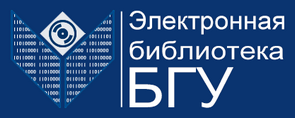Пожалуйста, используйте этот идентификатор, чтобы цитировать или ссылаться на этот документ:
https://elib.bsu.by/handle/123456789/288288| Заглавие документа: | 2N+4-rule and an atlas of bulk optical resonances of zigzag graphene nanoribbons |
| Авторы: | Payod, Renebeth B. Grassano, Davide Santos, Gil Nonato C. Levshov, Dmitry I. Pulci, Olivia Saroka, Vasil A. |
| Тема: | ЭБ БГУ::ЕСТЕСТВЕННЫЕ И ТОЧНЫЕ НАУКИ::Физика |
| Дата публикации: | 2020 |
| Издатель: | Nature Research |
| Библиографическое описание источника: | Nat Commun 2020;11(1). |
| Аннотация: | Development of on-chip integrated carbon-based optoelectronic nanocircuits requires fast and non-invasive structural characterization of their building blocks. Recent advances in synthesis of single wall carbon nanotubes and graphene nanoribbons allow for their use as atomically precise building blocks. However, while cataloged experimental data are available for the structural characterization of carbon nanotubes, such an atlas is absent for graphene nanoribbons. Here we theoretically investigate the optical absorption resonances of armchair carbon nanotubes and zigzag graphene nanoribbons continuously spanning the tube (ribbon) transverse sizes from 0.5(0.4) nm to 8.1(12.8) nm. We show that the linear mapping is guaranteed between the tube and ribbon bulk resonance when the number of atoms in the tube unit cell is 2 N+ 4 , where N is the number of atoms in the ribbon unit cell. Thus, an atlas of carbon nanotubes optical transitions can be mapped to an atlas of zigzag graphene nanoribbons. |
| URI документа: | https://elib.bsu.by/handle/123456789/288288 |
| DOI документа: | 10.1038/s41467-019-13728-8 |
| Scopus идентификатор документа: | 85077480453 |
| Финансовая поддержка: | The authors thank C.A. Downing, R.R. Hartmann, M.E. Portnoi, K.G. Batrakov, P.P. Kuzhir, A.L. Pushkarchuk, A.V. Kuhta, F. Yao and K. Liu for their very helpful discussions, J. Danon for providing computational facilities at NTNU and A.R. Villagracia for providing the computing workstation in STRC, De La Salle University. CPU time for the DFT calculations was granted by CINECA HPC center. This work was supported by EU H2020 RISE Project CoExAN (GA644076), and partly by the Research Council of Norway Center of Excellence funding scheme (project no. 262633, “QuSpin”). The authors also acknowledge the financial support from VCRI, De La Salle University. |
| Лицензия: | info:eu-repo/semantics/openAccess |
| Располагается в коллекциях: | Статьи НИУ «Институт ядерных проблем» |
Полный текст документа:
| Файл | Описание | Размер | Формат | |
|---|---|---|---|---|
| s41467-019-13728-8.pdf | 3,25 MB | Adobe PDF | Открыть |
Все документы в Электронной библиотеке защищены авторским правом, все права сохранены.

